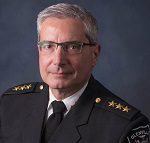Body-worn camera footage, surveillance videos and bystander recordings often take the spotlight after use of force incidents, making the rounds on the internet and in the courtroom. While video is generally seen as a reliable witness, providing an exact account of the incident, this may not always be the case. What you see is not necessarily what you get when it comes to video.
There are several technical concerns to consider when reviewing and using video evidence, including:
- Intentionally (or unintentionally) misleading video clips
- Inability of video to capture psychological and physiological experiences
- Video quality, placement and dimensions
In our pursuit of the truth, we must remember video cannot tell us everything we need to know about an incident. Video is simply one of many tools in our search for the truth and we won’t always require video to find out what happened.
Misleading Videos
Technical concerns with video evidence relate to the opportunity for what we see to be misleading or inaccurately perceived. It can be as simple as a shift in audio and visual synchronization or as complex as detailed editing. Timing and synchronization issues can even occur unintentionally as the video files are compressed or uploaded to various platforms. In use of force incidents specifically, timing is incredibly important to determining whether the use of force was excessive. Obtaining the original file can help to ensure the video reflects the incident as accurately as possible.
Video can also be misleading when there is a lack of context. When the viewer – whether a member of the public or the jury – is unaware of the situation surrounding an incident, it becomes all too easy to draw undue conclusions. Here, hindsight bias comes into play and can dramatically affect viewers’ reactions and decisions.
Perspectives & the Human Experience
While video can provide a broad view of what happened, it cannot adequately show what the officers and subjects are focused on or replicate the human psychological and physiological experience of the moment. When in stressful situations, humans often experience tunnel vision and auditory exclusion, concentrating their limited attention on the perceived threat. Video cannot capture the psychological processing that takes place, the body’s response to stimuli or the focused attention on specific areas of the event.
Solid video evidence can provide a portion of narrative truth of the events, but because video cannot adequately portray the human experience, the historical truth can quickly be lost. Both historical and narrative truth are relevant in determining the reasonableness of an officer’s actions, so video evidence, eyewitness accounts and other evidence must be taken into consideration.
In our pursuit of the truth, we must remember video cannot tell us everything we need to know about an incident.
Video Quality
Recording quality can greatly influence the effectiveness and accuracy of video evidence. Lower quality video means various aspects of the incident, such as a weapon or slight or rapid movement, can become almost imperceptible. Typically, videos use “predictive frames,” showing changes detected from one frame of the video to the next, rather than fully rendering a new image for each frame. This translates to a decrease in accuracy against what was perceived and experienced by those physically at the incident.
Properly placing the recording device also impacts accuracy and reliability. Body-cams should be placed where they will not be blocked by the officer’s body, allowing an unobstructed view of the incident. The angle an event is recorded from can drastically alter depth and distance perception for viewers of the video. Surveillance cameras placed at an angle or with a wide-angle lens can significantly increase or decrease the perceived distance in the recording compared to the observed distance by those involved.
Finally, light and changes in lighting affect video quality, consistency and similarity to the human perspective. Sometimes, videos are able pick up details in low light that people are unable to see or could not perceive in the moment. Other times, a rapid shift from daylight to darkness can cause the video to temporarily black out, leaving a hole in the recording.
Each of these technical concerns should be taken into consideration when viewing and using video evidence. Video is a great tool for law enforcement, courts and communities, but should not be considered the final word on what happened. We must approach each recording critically, as we would any evidence, and assess its accuracy, relevance and role in every case.
To learn more about the technical and organizational limitations of video, check out our on-demand webinar, “Conclusive Evidence? Understanding the Limitations of Video Footage.”

